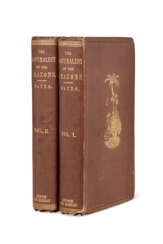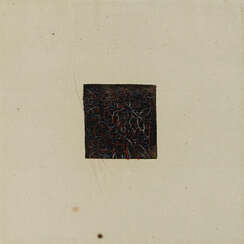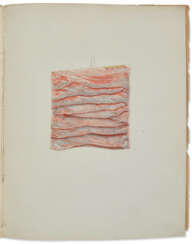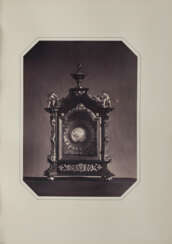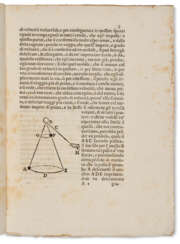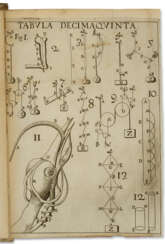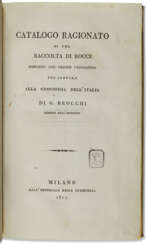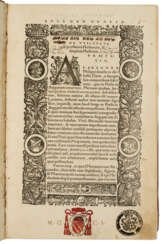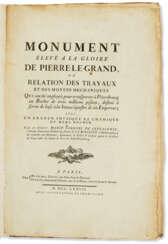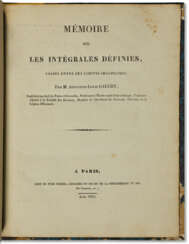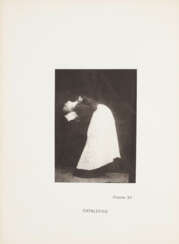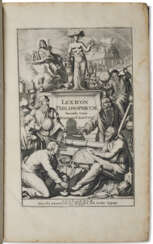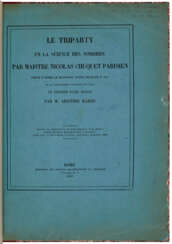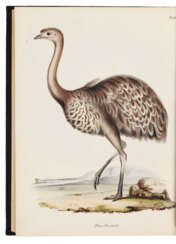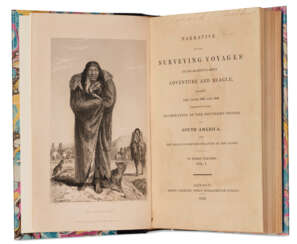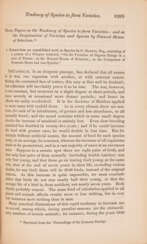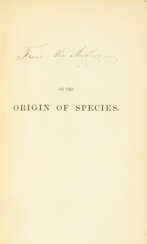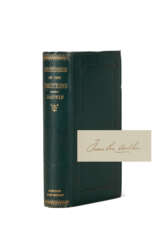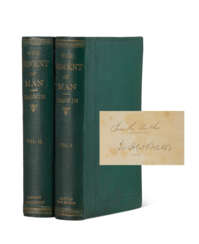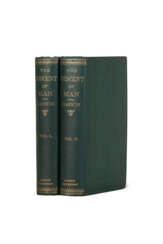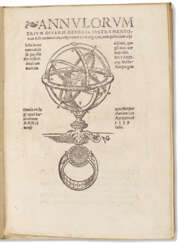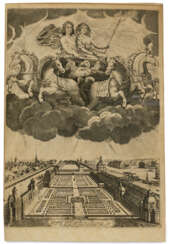
Printed books — Fine Printed Books and Manuscripts including Americana
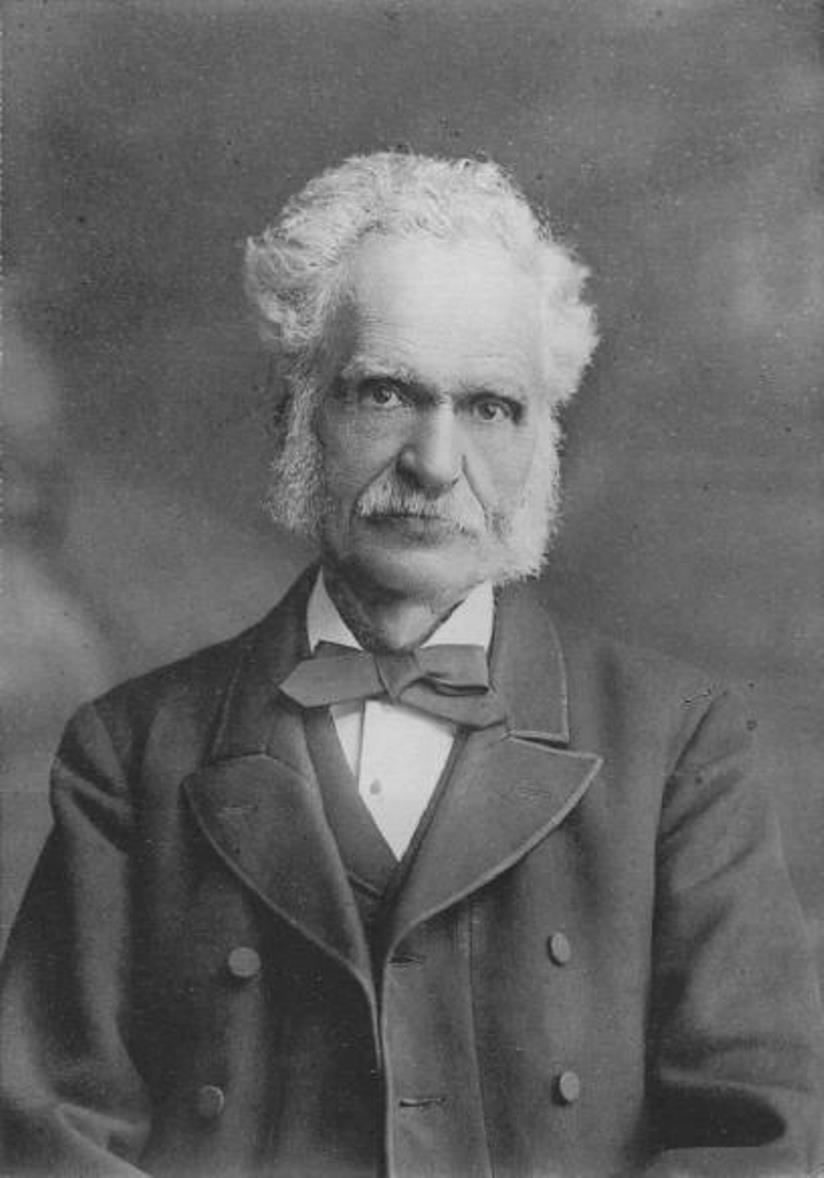
Henry Walter Bates was a British naturalist, biologist and traveler.
As a young man, Henry worked in a factory and attended the local mechanical institute, where he excelled in Greek, Latin, French, drawing and composition, later learning German and Portuguese. He also practiced classical music and was an avid entomologist.
In 1844, Bates met entomologist Alfred Russel Wallace, who a few years later invited him to go to the tropical jungle on a scientific expedition. In May 1848, they arrived in Para, Brazil, near the mouth of the Amazon River. Wallace returned to England four years later, but Bates remained there for a total of 11 years, exploring the entire Amazon Valley, where he collected some 14,712 species, mostly insects, of which 8,000 were previously unknown.
On his return to England in 1859, Bates began working on his vast collections and preparing a famous paper published in 1862 entitled Contributions to an Insect Fauna of the Amazon Valley. In 1864 Bates was appointed assistant secretary of the Royal Geographical Society (London), a position he held until his death. He wrote The Naturalist on the Amazon River (1863), as well as many works on entomology.
Bates's work in demonstrating the action of natural selection in animal mimicry (imitation of other living organisms or inanimate objects) provided strong support for Charles Darwin's theory of evolution. Much of Bates's insect collections are in the British Museum.
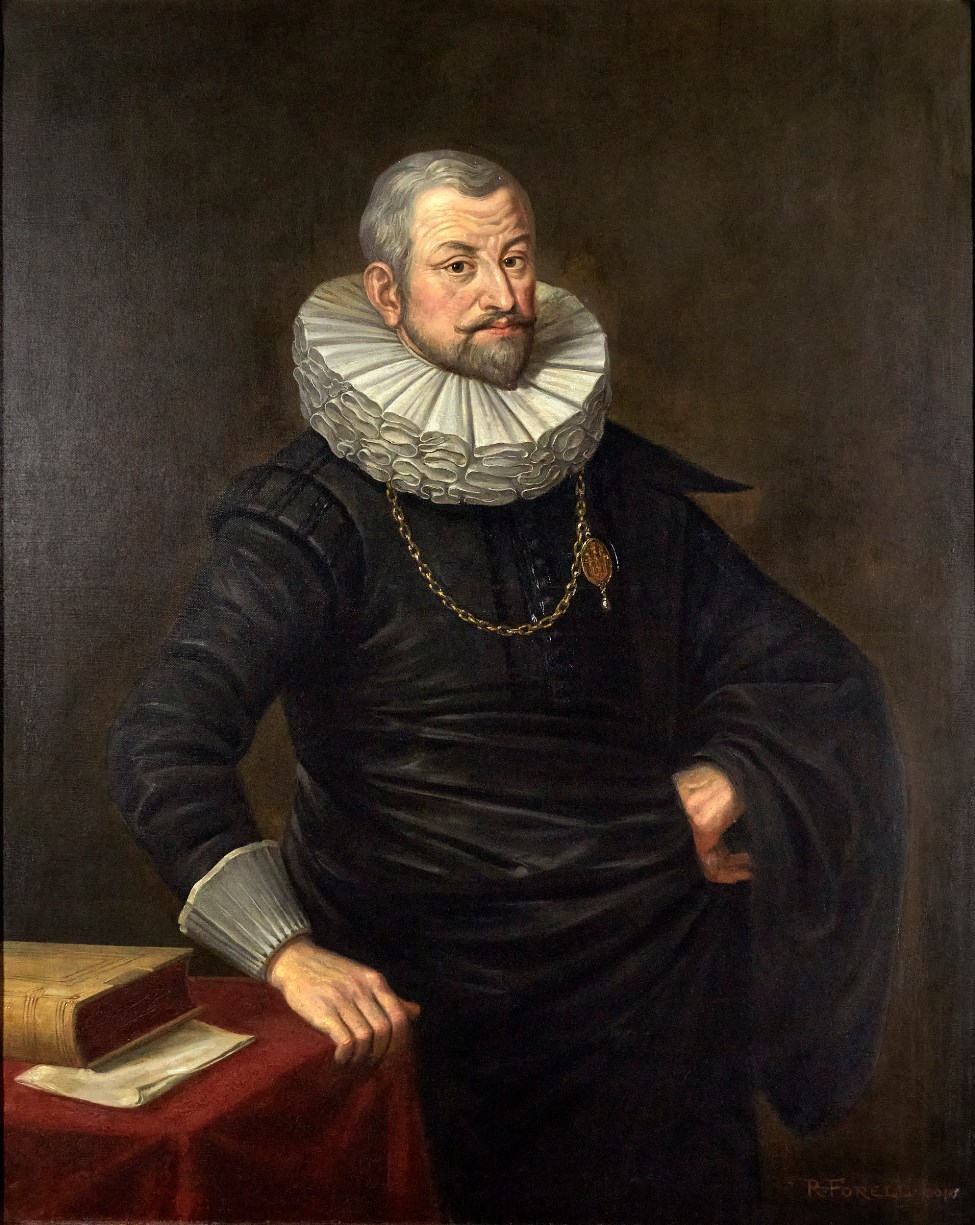
Johann Hartmann Beyer was a German physician, mathematician and statesman.
He earned a master's degree in liberal arts at the University of Strasbourg, and then graduated from the University of Tübingen with a doctorate in medicine. In 1588 Beyer returned to his native Frankfurt and began working as a physician; a year later he was appointed Physicus ordinarius - his duties included overseeing the city's health care and pharmacy system.
In 1614 Beyer took up the position of senior burgomaster of Frankfurt, but during the Fetmilch Rebellion he became involved in conflict, was forced to resign and returned to science.
He had the richest library of scientific books, numbering about 2500 volumes, wrote scientific works on astronomy and mathematics, engaged in medical activity, having invented the famous Frankfurt pills. Beyer carried on a lively correspondence with scientists, including mathematician Johannes Kepler, dealing with decimal fractions. Beyer bequeathed his rich inheritance to the city and to charity.
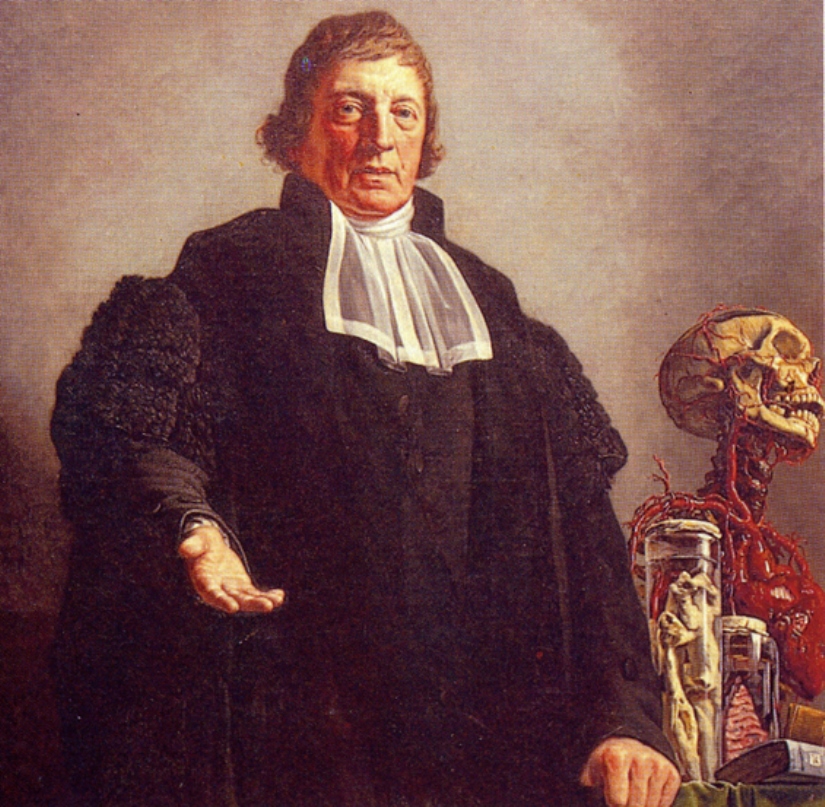
Jan Bleuland was a Dutch physician, medical scientist, educator and writer.
Bleuland was an intellectually advanced man, a sought-after physician, and a rich lover of the arts. Jan Bleuland taught anatomy, physiology and obstetrics for 31 years and was professor and rector of Utrecht University. His talents as a physician and medical researcher were recognized not only by his patients and the scientific community, but also by the highest authorities.
During his lifetime, Jan Bleuland amassed a large collection of medical specimens of the human body, which he used for research. Part of this significant collection is still on display in the original wooden Bleulandkabinet in the Utrecht University Museum. The Bleulandkabinet contains an extensive collection of skeletons, embryos in alcohol and wax preparations of body parts. His pioneering preparations were acquired by Utrecht University by royal decree of King Willem I in 1815 and are still used as teaching material.

Jan Bleuland was a Dutch physician, medical scientist, educator and writer.
Bleuland was an intellectually advanced man, a sought-after physician, and a rich lover of the arts. Jan Bleuland taught anatomy, physiology and obstetrics for 31 years and was professor and rector of Utrecht University. His talents as a physician and medical researcher were recognized not only by his patients and the scientific community, but also by the highest authorities.
During his lifetime, Jan Bleuland amassed a large collection of medical specimens of the human body, which he used for research. Part of this significant collection is still on display in the original wooden Bleulandkabinet in the Utrecht University Museum. The Bleulandkabinet contains an extensive collection of skeletons, embryos in alcohol and wax preparations of body parts. His pioneering preparations were acquired by Utrecht University by royal decree of King Willem I in 1815 and are still used as teaching material.
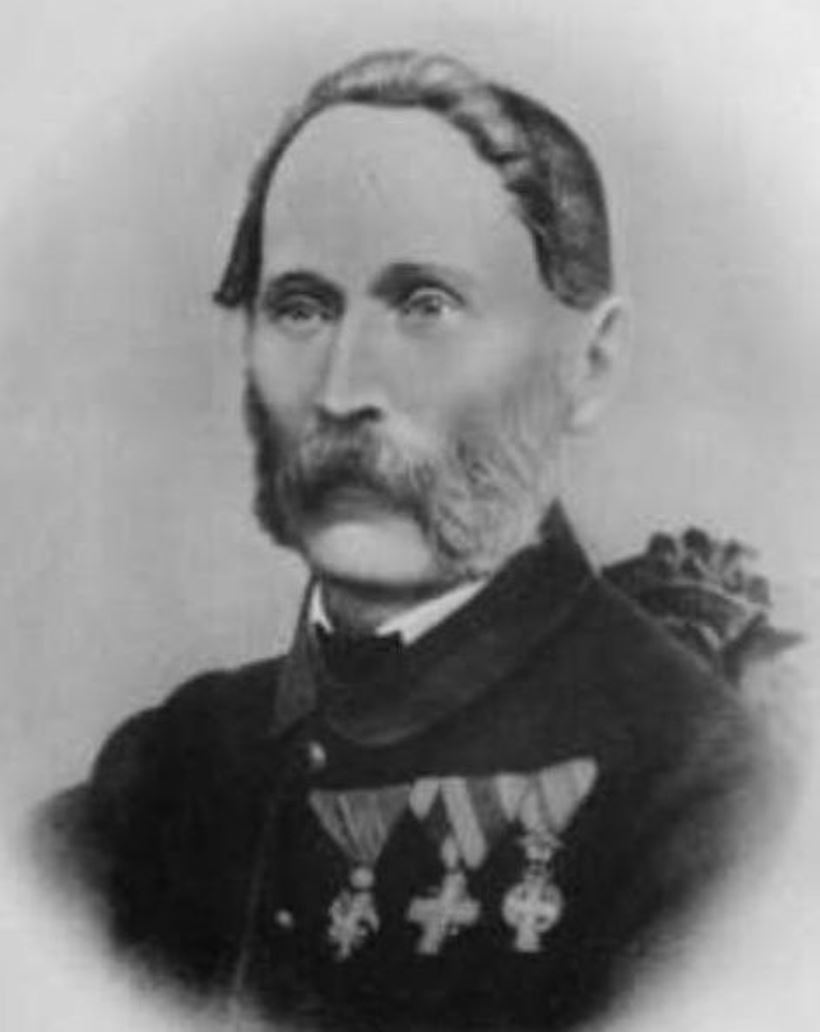
Joseph Georg Böhm was an Austrian astronomer, astrophysicist, cartographer, mathematician, and educator.
At the University of Prague, Böhm attended lectures in mathematics, physics, astronomy, and, after receiving his doctorate, became an assistant at the Vienna Observatory under Joseph Johann von Littrow. He then worked at the observatory at Othen and taught mathematics at the University of Salzburg. In 1839 he was appointed professor of mathematics and practical geometry at the University of Innsbruck, and in 1848 he was elected its rector. In 1852 Böhm was appointed director of the Prague Observatory and professor of theoretical and practical astronomy at the University of Prague.
Georg Böhm published several significant astronomical papers on solar observation. He is the creator of several instruments for astronomical measurements and observations, and he designed the Uranoscope and Universal Gnomon for amateur astronomical observations for the general public. As a member of the commission for the repair of the Prague Astronomical Clock, which he joined in 1865, he wrote a detailed description of it in the work Beschreibung der alterthümlichen Prager Rathausuhr. In addition to astronomy and its popularization, he was also involved in agriculture, economics, and geodesy. One of his important works is Ballistic Experiments (1865).
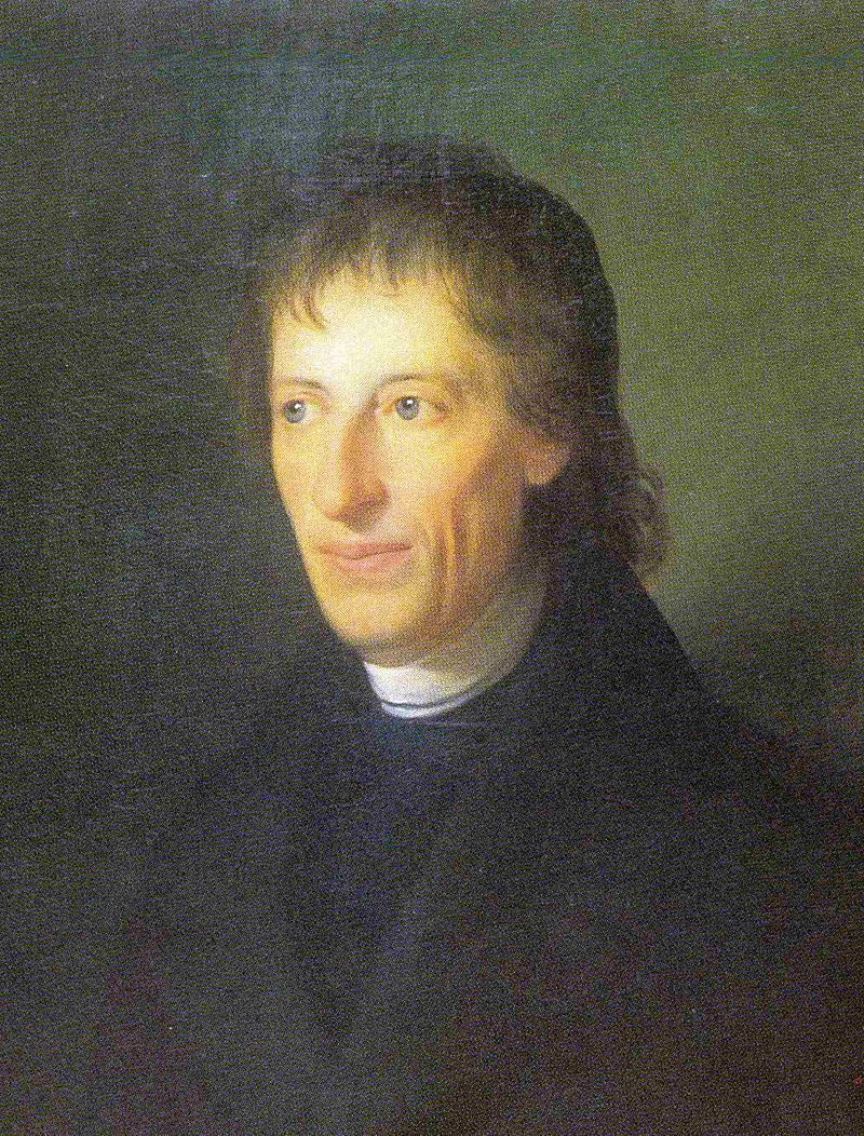
Bernard Bolzano, full name Bernard Placidus Johann Nepomuk Bolzano, was an Italian-born Czech scientist, mathematician, logician, philosopher and theologian.
Bolzano graduated from the University of Prague and was immediately appointed professor of philosophy and religion at the university. Within a few years, however, Bolzano had already shown himself to be a free thinker with his teachings on the social costs of militarism and the needlessness of war. He called for a complete reform of the educational, social, and economic systems that would direct the nation's interests toward peace rather than armed conflict between states. In 1819, Bolzano was expelled from the university for his beliefs and thereafter turned his full attention to works on social, religious, philosophical, and mathematical issues.
Bolzano held advanced views on logic, mathematical quantities, limits, and continuity. He is the author of the first rigorous theory of real numbers and one of the founders of set theory. In his studies of the physical aspects of force, space, and time, he proposed theories opposed to those advanced by the German philosopher Immanuel Kant. His contributions to logic, in particular, established his reputation as the greatest logician of his time. Much of his work remained unpublished during his lifetime and was not widely disseminated until the late nineteenth and early twentieth centuries, when a number of his conclusions were reached independently.
Bolzano was multi-talented in various fields of science to which he made significant contributions. His published works include The Binomial Theorem (1816), A Purely Analytic Proof (1817), The Functional Model and the Scientific Model (1834), An Attempt at a New Statement of Logic (1837), and The Paradoxes of Infinity (1851).
Among other things, Bolzano was also a great philanthropist. Together with his friends and students, he supported the activities of almshouses, homes for the blind, loan banks for the working class, libraries, and elementary schools in rural areas.
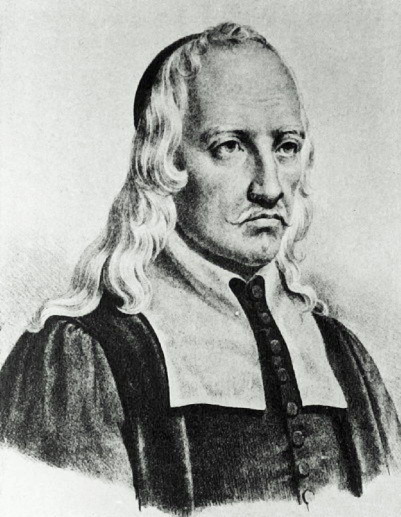
Giovanni Alfonso Borelli was an Italian universalist scientist of the 17th century Scientific Revolution, the founder of biomechanics.
He studied mathematics under Benedetto Castelli (1577-1644) in Rome. In the 1640s Borelli was appointed to the chair of mathematics at the University of Messina and at Pisa in 1656. After 12 years at Pisa and numerous disputes with colleagues, Borelli left the university. In 1667 Borelli returned to the University of Messina, where he engaged in literary and historical studies, studied the eruption of the volcano Etna, and continued to work on the problem of muscular movement of animals and other bodily functions according to the laws of statics and dynamics. In 1674 he was accused of participating in a conspiracy to liberate Sicily from Spain and fled to Rome.
Borelli is known primarily for his attempts to explain muscular movement and other bodily functions according to the laws of statics and dynamics. His best-known work is De Motu Animalium (1680-81; "On the Motion of Animals"). Borelli calculated the forces required for balance in the various joints of the human body, long before Newton published his Laws of Motion. Borelli was the first to realize that musculoskeletal levers increase motion, not force, so muscles must produce much greater forces than those that resist motion. He was also one of the first microscopists: he made microscopic studies of blood circulation, nematodes, textile fibers, and spider eggs. Borelli also authored works on physics, medicine, astronomy, geology, mathematics, and mechanics.

Giovanni Alfonso Borelli was an Italian universalist scientist of the 17th century Scientific Revolution, the founder of biomechanics.
He studied mathematics under Benedetto Castelli (1577-1644) in Rome. In the 1640s Borelli was appointed to the chair of mathematics at the University of Messina and at Pisa in 1656. After 12 years at Pisa and numerous disputes with colleagues, Borelli left the university. In 1667 Borelli returned to the University of Messina, where he engaged in literary and historical studies, studied the eruption of the volcano Etna, and continued to work on the problem of muscular movement of animals and other bodily functions according to the laws of statics and dynamics. In 1674 he was accused of participating in a conspiracy to liberate Sicily from Spain and fled to Rome.
Borelli is known primarily for his attempts to explain muscular movement and other bodily functions according to the laws of statics and dynamics. His best-known work is De Motu Animalium (1680-81; "On the Motion of Animals"). Borelli calculated the forces required for balance in the various joints of the human body, long before Newton published his Laws of Motion. Borelli was the first to realize that musculoskeletal levers increase motion, not force, so muscles must produce much greater forces than those that resist motion. He was also one of the first microscopists: he made microscopic studies of blood circulation, nematodes, textile fibers, and spider eggs. Borelli also authored works on physics, medicine, astronomy, geology, mathematics, and mechanics.
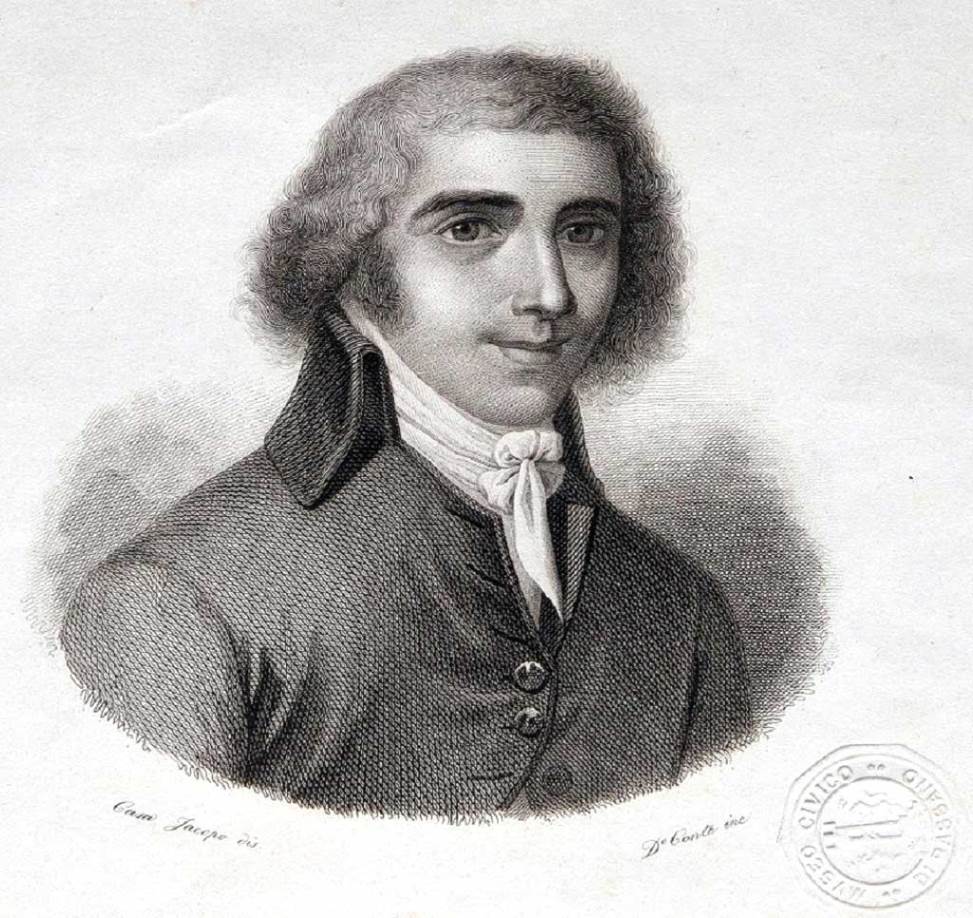
Giovanni Battista Brocchi was an Italian mineralogist, geologist and paleontologist.
Brocchi studied law at the University of Padua, but was seriously interested in natural sciences and mineralogy. In 1802, Brocchi became a teacher of natural history at the Brescia Gymnasium. Appointment in 1808 as inspector of mines in Milan gave him the opportunity to travel extensively in Italy, making extensive notes and collecting numerous samples. The fruits of these labors appeared in various publications, notably his "Treatise mineralogical and chemical on the iron mines of the department of Mella" (1808). He then obtained a position as inspector of mining in the newly created kingdom of Italy.
In 1811 Brocchi wrote a valuable essay entitled "Mineralogical Memoirs on the Fassa Valley in the Tyrol." He made his first extensive exploration of central Italy in 1811-1812, witnessed the eruption of Vesuvius, and was able to compare the condition of its crater before and after the eruption. But his most important work is Fossils of the Sub-Apennines with geological observations on the Apennines and adjacent soil (1814), which contains precise details of the structure of the Apennine ridge and an account of the fossilization of Italian Tertiary strata in comparison with existing species. Brocchi also wrote several significant works on biology.
In the fall of 1822 he sailed from Trieste to Egypt, whence he made excursions up the Nile and into Syria and Palestine. In 1826 he contracted the bubonic plague, of which he died. His last journals and collections are preserved at the Museo Civico in Bassano. In all, Brocchi published five voluminous books and about seventy articles in various journals.
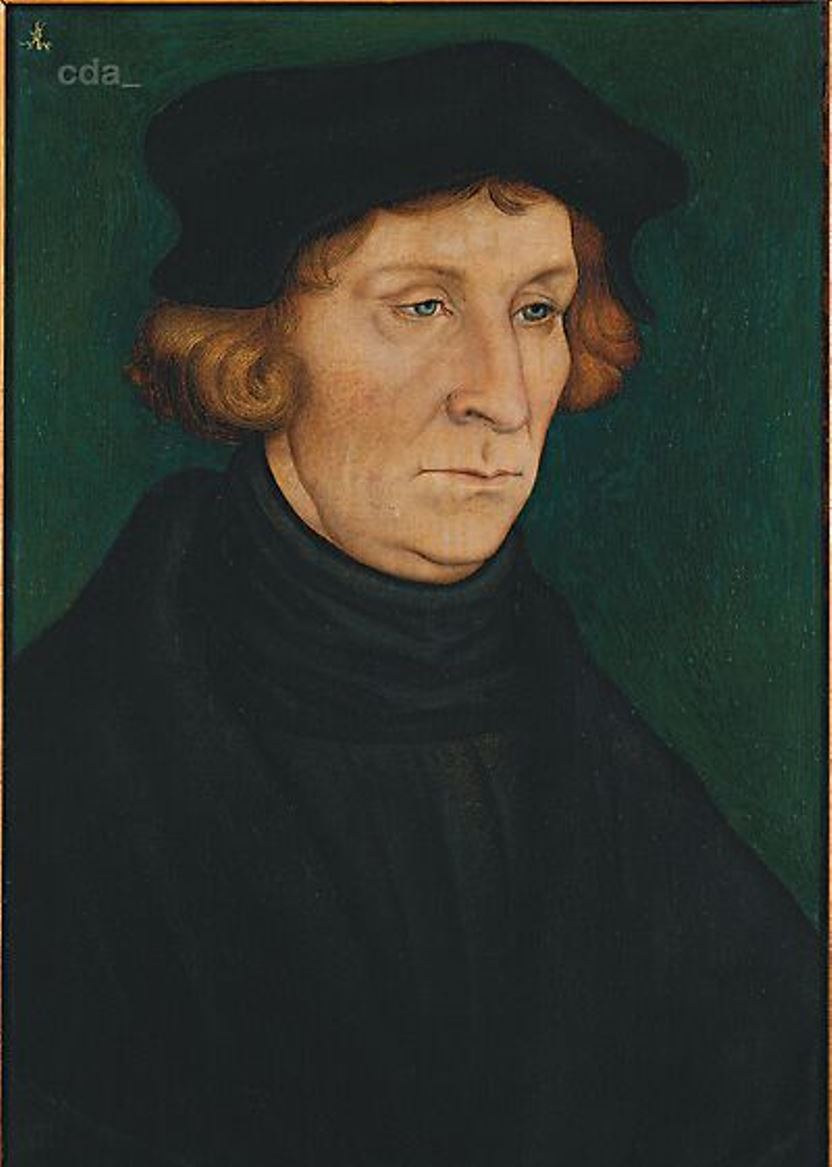
Otto Brunfels (also Brunsfels, Braunfels) was a German theologian, botanist and physician.
After studying theology and philosophy at the University of Mainz, Brunfels went to a Cartesian monastery near Strasbourg and later became interested in botany there. 1524 he opened a school in Strasbourg. In 1530, Brunfels began studying medicine at the University of Basel and two years later became city physician in Bern, where he remained for the rest of his life.
In addition to theological works, Brunfels published works on education, Arabic, pharmacy, and botany. His Herbarium Vivae Icones (1530 and 1536) and Contrafayt Kreüterbuch (1532-1537) contain woodcuts of German plants with their German common names. The 135 original woodcuts are detailed, accurate, and realistic depictions of living plants by the German artist and engraver Hans Weiditz. Brunfels' work contributed to the shift away from medieval outdated herbalism to the establishment of botany as a modern science. Carl Linnaeus considered Brunfels one of the founders of modern botany.
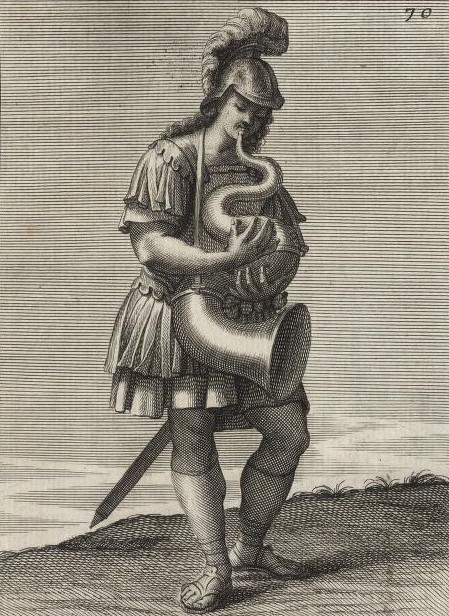
Filippo Bonanni or Buonanni was an Italian Jesuit scholar. His many works included treatises on fields ranging from anatomy to music. He created the earliest practical illustrated guide for shell collectors in 1681, for which he is considered a founder of conchology. He also published a study of lacquer that has been of lasting value since his death.
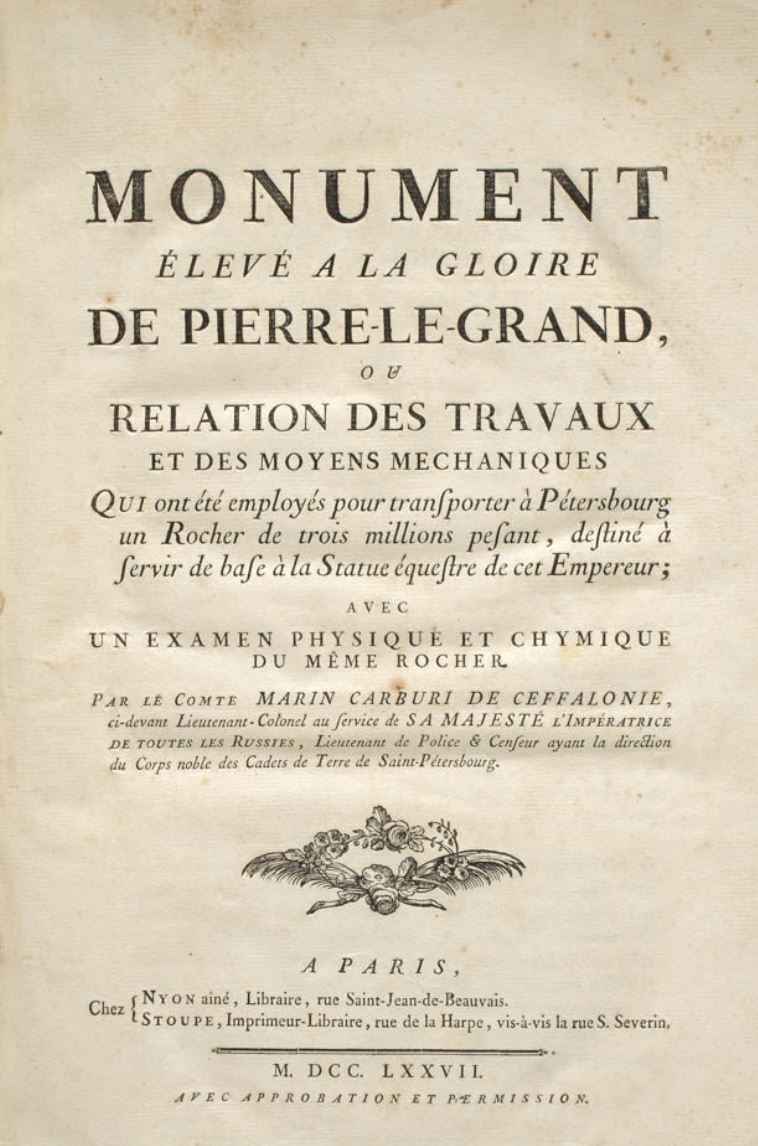
Marin Carburi of Ceffalonie was a Greek military engineer from Kefalonia.
Carburi studied mathematics at the University of Bologna, but later had to flee and became an officer in Catherine the Great's Russian army. He became famous for being able to transport the infamous Grom Stone from the Gulf of Finland to St. Petersburg to serve as a pedestal for the equestrian statue of Peter the Great.
The history of this engineering feat is quite remarkable. The French architect Falcone, who was commissioned to create a monument to Peter the Great, decided that traditional pedestals for equestrian statues were too banal for this project, and decided that only a massive rock would do. After a long search for a suitable rock, a peasant informed the commission created for this purpose that he had found a huge rock measuring forty by twenty-seven by twenty-one feet in a swamp near the Gulf of Finland. After the majority of engineers recognized its movement impossible, Catherine II commissioned Carburi to do it, with which he brilliantly coped. In fact, the military engineer became the inventor of ball bearings, creating a giant sled based on them. He wrote a detailed treatise about it, published in Paris in 1777.
Back home in Kefalonia, Carburi took up farming, but in 1782 he was murdered by his workers.

Augustin Louis Cauchy was a French mathematician and mechanic, military engineer, and founder of mathematical analysis.
Cauchy studied at the École Polytechnique and at the Paris School of Bridges and Roads. After becoming a military engineer, he went to Cherbourg in 1810 to work on harbors and fortifications for Napoleon's English invasion. Here he began independent mathematical research. Cauchy returned to Paris in 1813, and Lagrange and Laplace convinced him to devote himself entirely to mathematics. The following year he published a memoir on definite integrals, which formed the basis of the theory of complex functions. From 1816, Cauchy held professorships at the Faculty of Natural Sciences, the Collège de France, and the École Polytechnique in Paris.
Cauchy developed the foundation of mathematical analysis, and made enormous contributions to analysis, algebra, mathematical physics, and many other areas of mathematics. He almost single-handedly founded the theory of functions of a complex variable, which has extensive applications in physics. Cauchy's greatest contributions to mathematics are published primarily in three of his treatises, "Courses in Analysis at the Royal Polytechnic School" (1821), "Summary of Lessons on Infinitesimal Calculus" (1823), and "Lessons on the Application of Infinitesimal Values in Geometry" (1826-28). In all, Augustin Louis Cauchy wrote about 800 scientific articles.
Cauchy was a member of the Paris Academy of Sciences, the Royal Society of London, the St. Petersburg Academy of Sciences, and other academies.
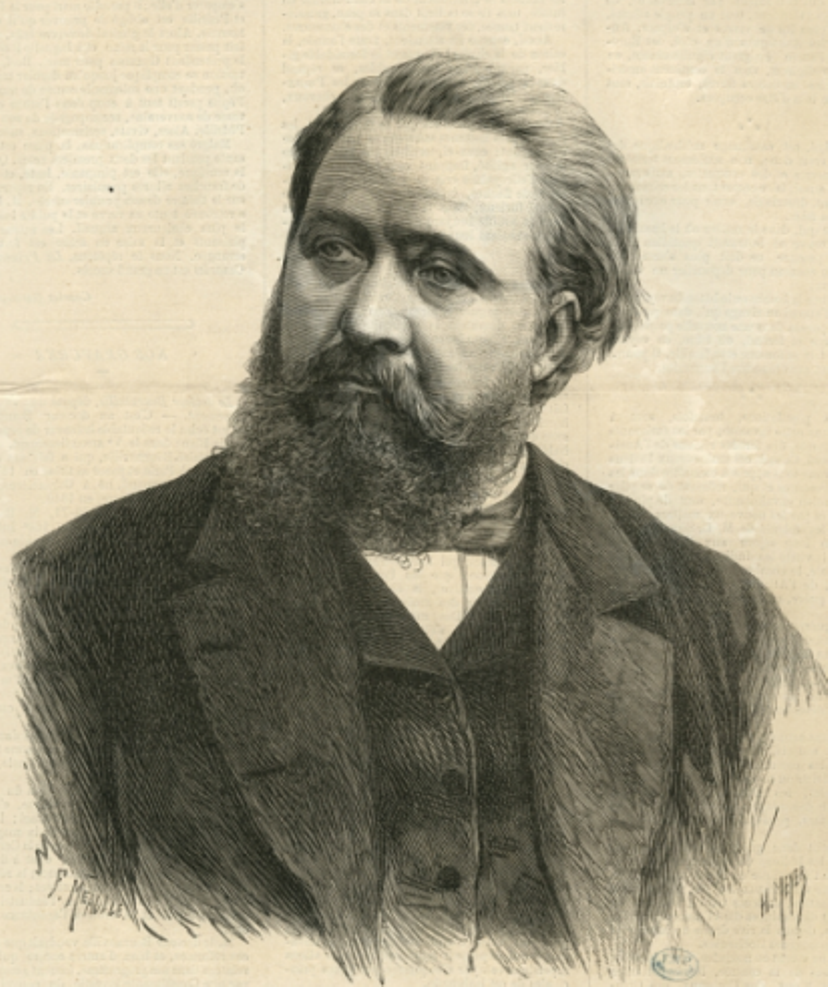
Désiré-Magloire Bourneville was a French physician, neurologist, innovator and educator, and statesman.
Born into a modest family, Bourneville began his medical education in 1860 and for about ten years worked as an assistant to Jean-Martin Charcot, where, together with Paul Régnard, he supervised the publication of "Photographic Iconography of Salpetriere". During the Franco-Prussian War, he served as both surgeon and physician's assistant. Appointed physician at Bissetre, Borneville devoted himself to the medical and educational care of "idiots and epileptics" for whom he organized a service, and later directed the Fondation Vallée in Gentilly until his death. He is considered one of the earliest child psychiatrists.
In 1876, Bourneville was elected a municipal councilor of Paris, three years later he became a general councilor of the Seine, and then a deputy. In this capacity, Bourneville carried out several health reforms: he became the rapporteur for the public assistance budget and the budget for psychiatric asylums, achieved the creation of the first special classes for mentally retarded children, and the first municipal nursing school in Salpêtrière.
Bourneville had many very different talents. Very early on he became interested in medical journalism, where he made a name for himself through the vividness of his articles. In 1873, he founded the journal Progrès Médical, which promoted the tenets of avant-garde medicine, open to pioneering scientific developments (Bourneville published Charcot's lessons) and social issues. He fully developed the theoretical and practical foundations of teaching for the nursing profession. Outraged by the lack of practitioners' professional knowledge of obstetrics, he worked to create a new medical specialty, gynecology. But his main purpose in life was to educate and nurture those who were labeled "idiots" and mentally retarded.
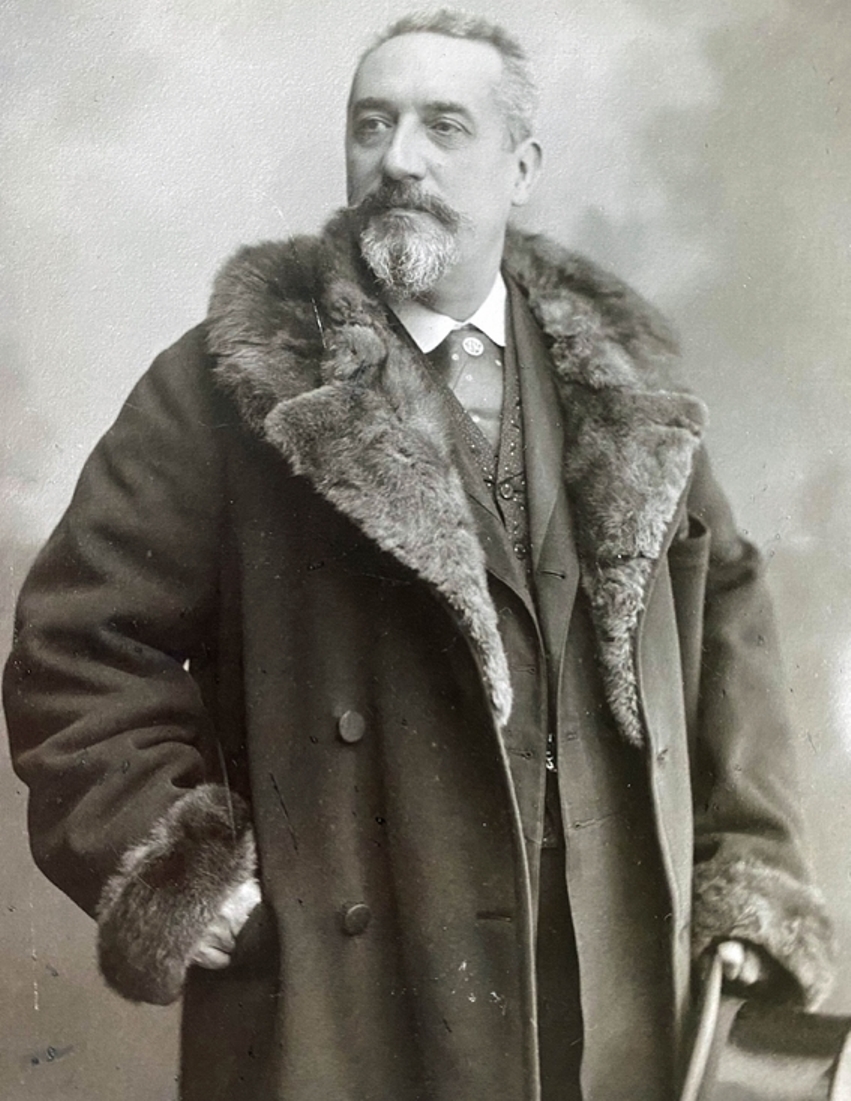
Paul Regnard, full name Paul Marie Léon Regnard, was a French physician, physiologist and photographer, and teacher.
He became a trainee at the hospital in 1874 and received his MD degree in 1878. Paul Regnard was deputy director of the Hautes Etudes Laboratories, and from 1878 taught general physiology at the newly founded National Agronomic Institute and later became its director (1902). He was also from 1895 a member of the Academy of Medicine in the section of biological sciences.
Regnard was one of the first practitioners of medical photography, particularly photographs of the mentally ill. Together with Désiré-Magloire Borneville, he directed the photographic service at the Salpêtrière Hospital of Paris, established by the psychiatrist J.C. Charcot (1825-1893). Numerous photographs were published in the book Iconographie Photographyique de la Salpêtrière. Regnard was a tireless researcher. He was one of the first naturalists to study the effects of atmospheric pressure on microbial metabolism. The scientist made a detailed historical and bibliographical survey of descriptions of possession and witchcraft through the ages, focusing on well-documented cases.
Regnar was particularly interested in the physical manifestations described by contemporaries: fainting spells, tetany, paresthesias, signs that could only be interpreted as diabolical or at least miraculous. All these signs Regnard had already observed, photographed, and treated at the Salpêtrière Hospital in the department of J.M. Charcot, to whom he dedicated this work, and so it was from the perspective of nascent psychiatry that Regnard analyzed these historical cases.
For his services, Regnard was made a Chevalier of the Legion of Honor in 1884, then an officer in 1900.
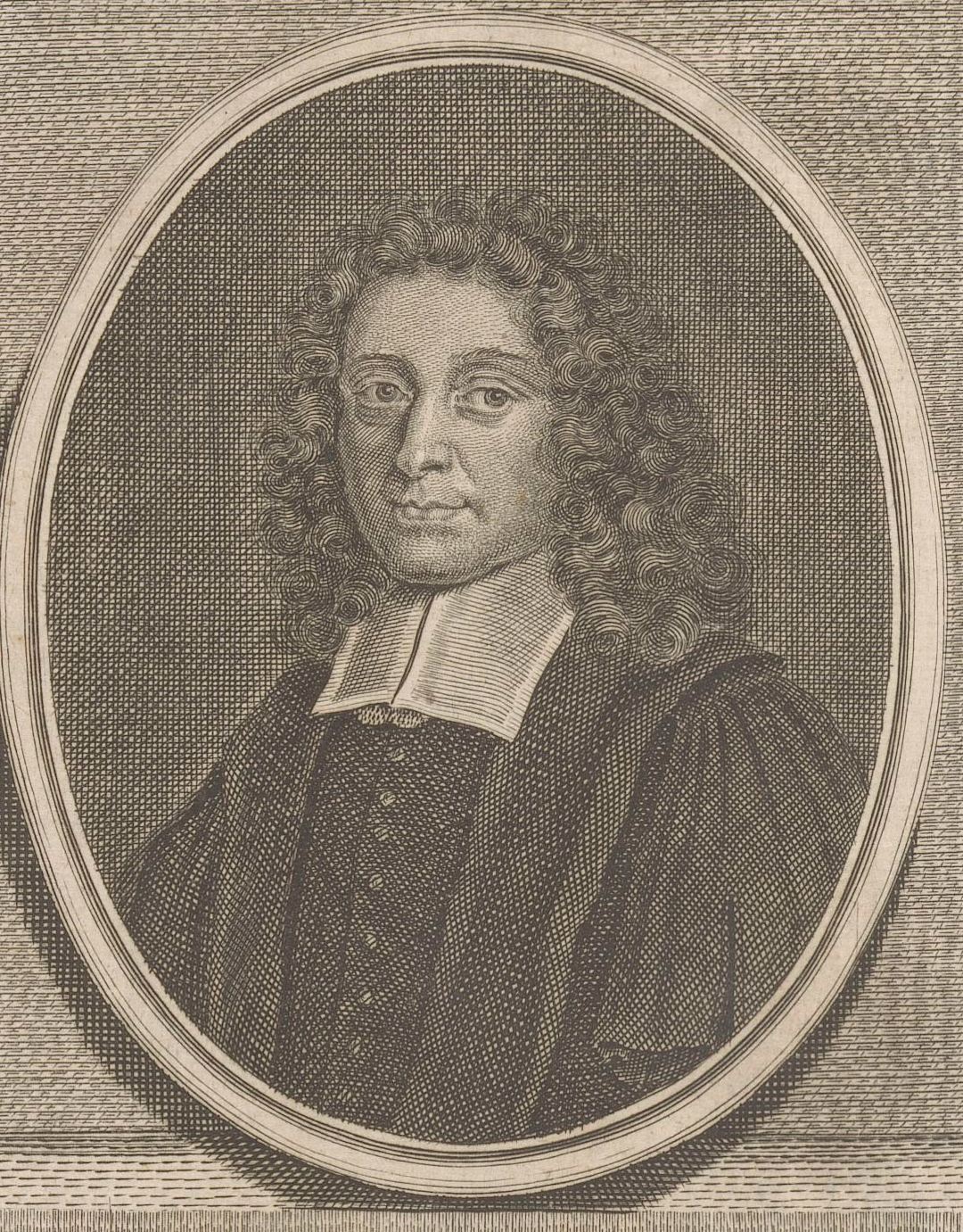
Étienne Chauvin was a French Protestant theologian and philosopher.
Chauvin's philosophy and worldview were entirely Cartesian. After his expulsion from Nîmes, Étienne Chauvin withdrew to Rotterdam, where he preached for several years in the Walloon Church. He was succeeded as professor of Baille at Rotterdam. In 1695 the Elector of Brandenburg appointed him pastor and professor of philosophy, and afterward inspector of the French college at Berlin.
Etienne Chauvin's major work is Lexicon Rationale, sive Thesaurus Philosophicus (1692). He also wrote Theses on the Knowledge of God (1662) and published the New Journal of Scholars (1694-1698).
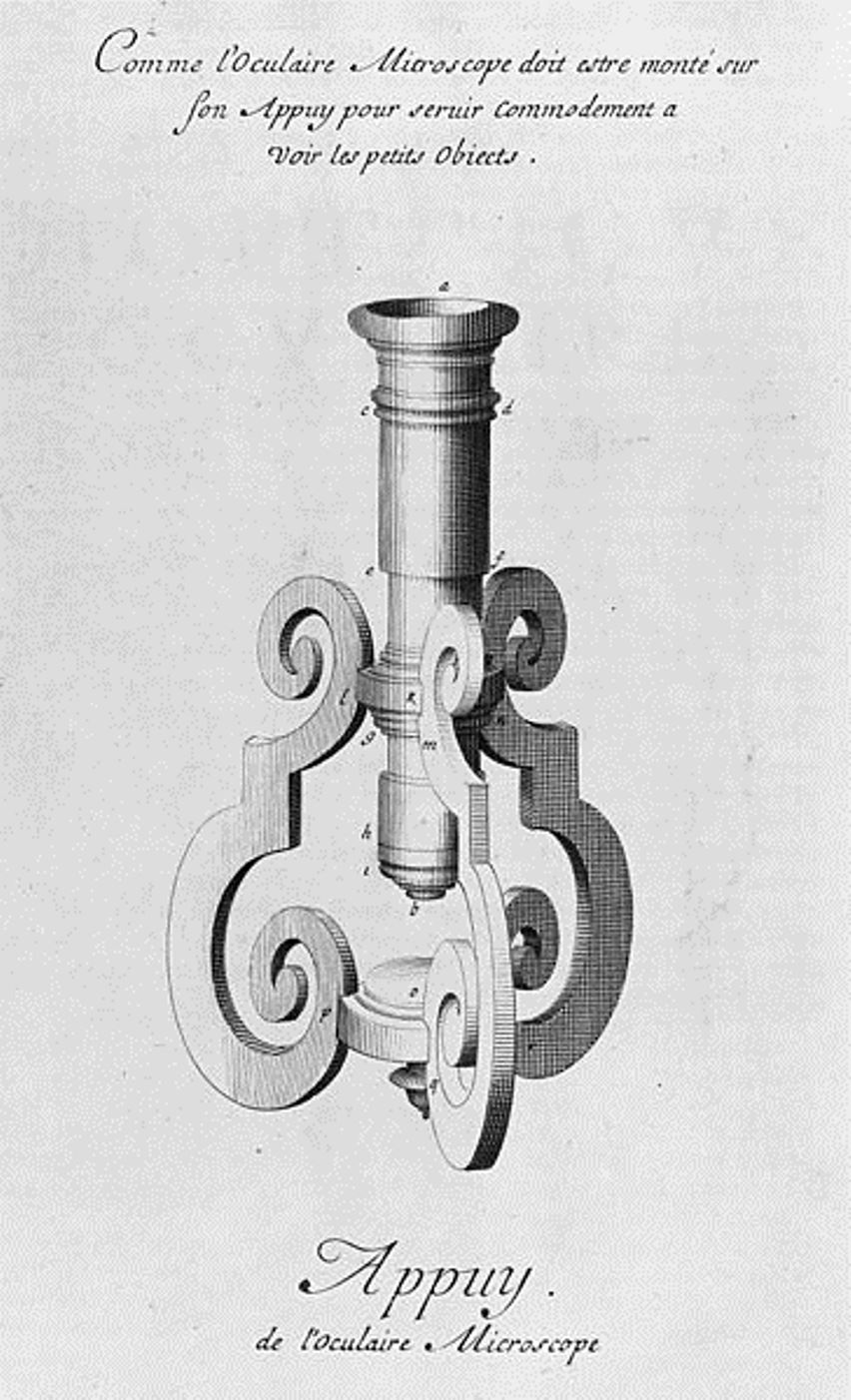
Chérubin of Orleans (French: Chérubin d'Orleans), born François or Michel Lasseré, was a French monk of the Order of the Friars Minor Capuchin, physicist, and optical instrument maker.
Cherubin was engaged in the study of optics and problems related to vision. He designed the first binocular telescope, as well as a special type of spectacle in which the lens was replaced by a short perforated tube. Many of his binoculars, binocular microscopes and telescopes survive today. Cheruben is also credited with modeling the eyeball to study the functioning of the ocular lens.
About his research and work, Cherubin of Orléans published in Paris the works La dioptrique oculaire (Dioptrique oculaire, 1671) and La vision parfaite (Perfect Vision, 1677).
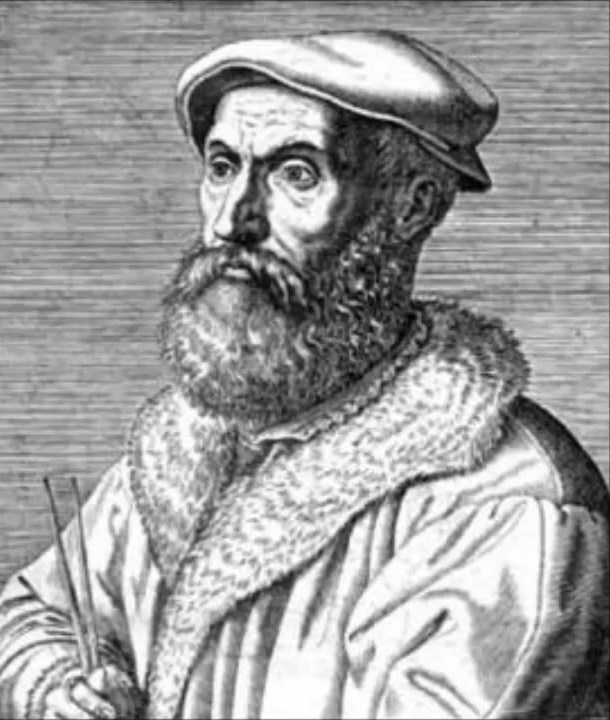
Nicolas Chuquet was a 15th century French mathematician.
The exact dates of birth and death of this scientist are not known, nor are the places of birth. Chuquet received a Bachelor of Medicine degree from the University of Paris, went to Italy in the early 1470s, and around 1480 moved to Lyon, where he worked as a physician, mathematics teacher, and scribe. He is also known to have translated Latin works into French.
In 1484 he wrote his major algebraic work, the treatise Le Triparty en la Science des Nombres (The Science of Numbers in Three Parts), now considered one of the most original mathematical texts of the 15th century. At the time, arithmeticians lacked even the most basic notations for addition subtraction, multiplication, and division. Chuquet was one of the first to propose these symbols; he also introduced the names of large numbers into common use: billion, trillion, etc. In addition to general arithmetic and rules for calculating roots, the treatise contains a doctrine of equations and a collection of problems.
This treatise was published only in 1880, but the works of Nicolas Chuquet had a significant influence on the development of algebra, and they were consistently supplemented and expanded by scientists of the following generations.
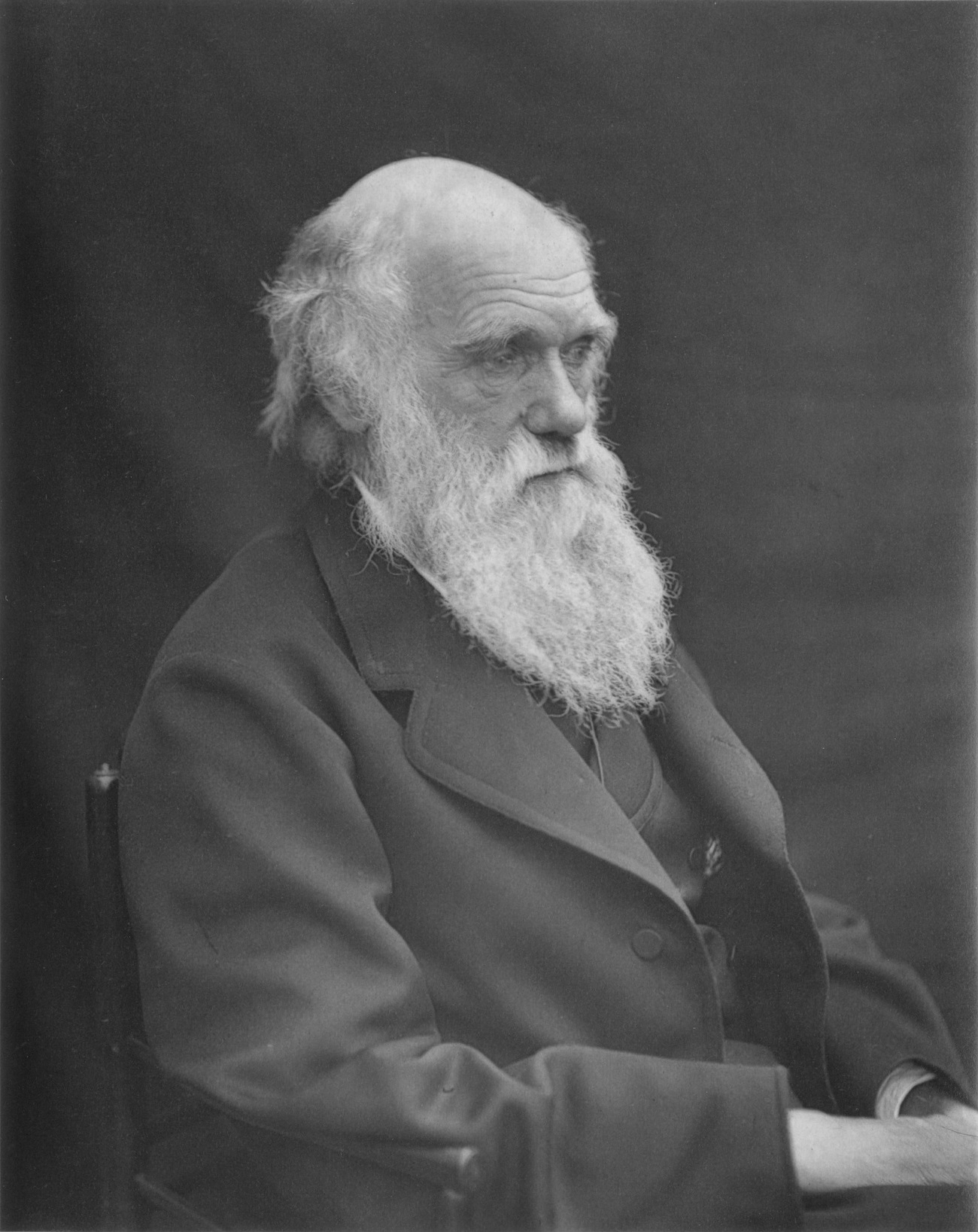
Charles Robert Darwin was an English naturalist, geologist, and biologist, widely known for contributing to the understanding of evolutionary biology. His proposition that all species of life have descended from a common ancestor is now generally accepted and considered a fundamental concept in science. In a joint publication with Alfred Russel Wallace, he introduced his scientific theory that this branching pattern of evolution resulted from a process that he called natural selection, in which the struggle for existence has a similar effect to the artificial selection involved in selective breeding. Darwin has been described as one of the most influential figures in human history, and he was honoured by burial in Westminster Abbey.

Charles Robert Darwin was an English naturalist, geologist, and biologist, widely known for contributing to the understanding of evolutionary biology. His proposition that all species of life have descended from a common ancestor is now generally accepted and considered a fundamental concept in science. In a joint publication with Alfred Russel Wallace, he introduced his scientific theory that this branching pattern of evolution resulted from a process that he called natural selection, in which the struggle for existence has a similar effect to the artificial selection involved in selective breeding. Darwin has been described as one of the most influential figures in human history, and he was honoured by burial in Westminster Abbey.

Charles Robert Darwin was an English naturalist, geologist, and biologist, widely known for contributing to the understanding of evolutionary biology. His proposition that all species of life have descended from a common ancestor is now generally accepted and considered a fundamental concept in science. In a joint publication with Alfred Russel Wallace, he introduced his scientific theory that this branching pattern of evolution resulted from a process that he called natural selection, in which the struggle for existence has a similar effect to the artificial selection involved in selective breeding. Darwin has been described as one of the most influential figures in human history, and he was honoured by burial in Westminster Abbey.

Charles Robert Darwin was an English naturalist, geologist, and biologist, widely known for contributing to the understanding of evolutionary biology. His proposition that all species of life have descended from a common ancestor is now generally accepted and considered a fundamental concept in science. In a joint publication with Alfred Russel Wallace, he introduced his scientific theory that this branching pattern of evolution resulted from a process that he called natural selection, in which the struggle for existence has a similar effect to the artificial selection involved in selective breeding. Darwin has been described as one of the most influential figures in human history, and he was honoured by burial in Westminster Abbey.
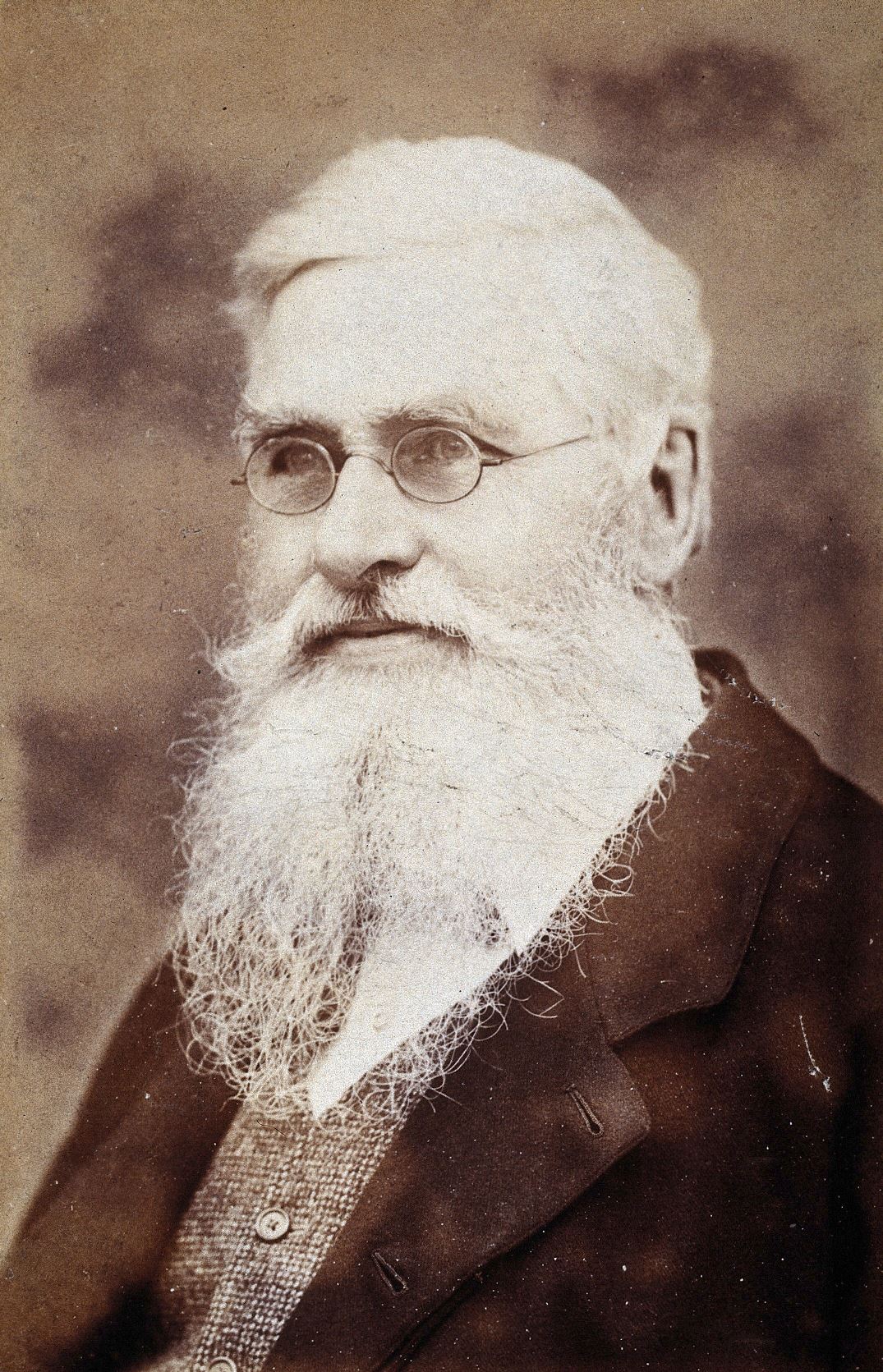

Charles Robert Darwin was an English naturalist, geologist, and biologist, widely known for contributing to the understanding of evolutionary biology. His proposition that all species of life have descended from a common ancestor is now generally accepted and considered a fundamental concept in science. In a joint publication with Alfred Russel Wallace, he introduced his scientific theory that this branching pattern of evolution resulted from a process that he called natural selection, in which the struggle for existence has a similar effect to the artificial selection involved in selective breeding. Darwin has been described as one of the most influential figures in human history, and he was honoured by burial in Westminster Abbey.

Charles Robert Darwin was an English naturalist, geologist, and biologist, widely known for contributing to the understanding of evolutionary biology. His proposition that all species of life have descended from a common ancestor is now generally accepted and considered a fundamental concept in science. In a joint publication with Alfred Russel Wallace, he introduced his scientific theory that this branching pattern of evolution resulted from a process that he called natural selection, in which the struggle for existence has a similar effect to the artificial selection involved in selective breeding. Darwin has been described as one of the most influential figures in human history, and he was honoured by burial in Westminster Abbey.

Charles Robert Darwin was an English naturalist, geologist, and biologist, widely known for contributing to the understanding of evolutionary biology. His proposition that all species of life have descended from a common ancestor is now generally accepted and considered a fundamental concept in science. In a joint publication with Alfred Russel Wallace, he introduced his scientific theory that this branching pattern of evolution resulted from a process that he called natural selection, in which the struggle for existence has a similar effect to the artificial selection involved in selective breeding. Darwin has been described as one of the most influential figures in human history, and he was honoured by burial in Westminster Abbey.

Charles Robert Darwin was an English naturalist, geologist, and biologist, widely known for contributing to the understanding of evolutionary biology. His proposition that all species of life have descended from a common ancestor is now generally accepted and considered a fundamental concept in science. In a joint publication with Alfred Russel Wallace, he introduced his scientific theory that this branching pattern of evolution resulted from a process that he called natural selection, in which the struggle for existence has a similar effect to the artificial selection involved in selective breeding. Darwin has been described as one of the most influential figures in human history, and he was honoured by burial in Westminster Abbey.

Charles Robert Darwin was an English naturalist, geologist, and biologist, widely known for contributing to the understanding of evolutionary biology. His proposition that all species of life have descended from a common ancestor is now generally accepted and considered a fundamental concept in science. In a joint publication with Alfred Russel Wallace, he introduced his scientific theory that this branching pattern of evolution resulted from a process that he called natural selection, in which the struggle for existence has a similar effect to the artificial selection involved in selective breeding. Darwin has been described as one of the most influential figures in human history, and he was honoured by burial in Westminster Abbey.

Charles Robert Darwin was an English naturalist, geologist, and biologist, widely known for contributing to the understanding of evolutionary biology. His proposition that all species of life have descended from a common ancestor is now generally accepted and considered a fundamental concept in science. In a joint publication with Alfred Russel Wallace, he introduced his scientific theory that this branching pattern of evolution resulted from a process that he called natural selection, in which the struggle for existence has a similar effect to the artificial selection involved in selective breeding. Darwin has been described as one of the most influential figures in human history, and he was honoured by burial in Westminster Abbey.
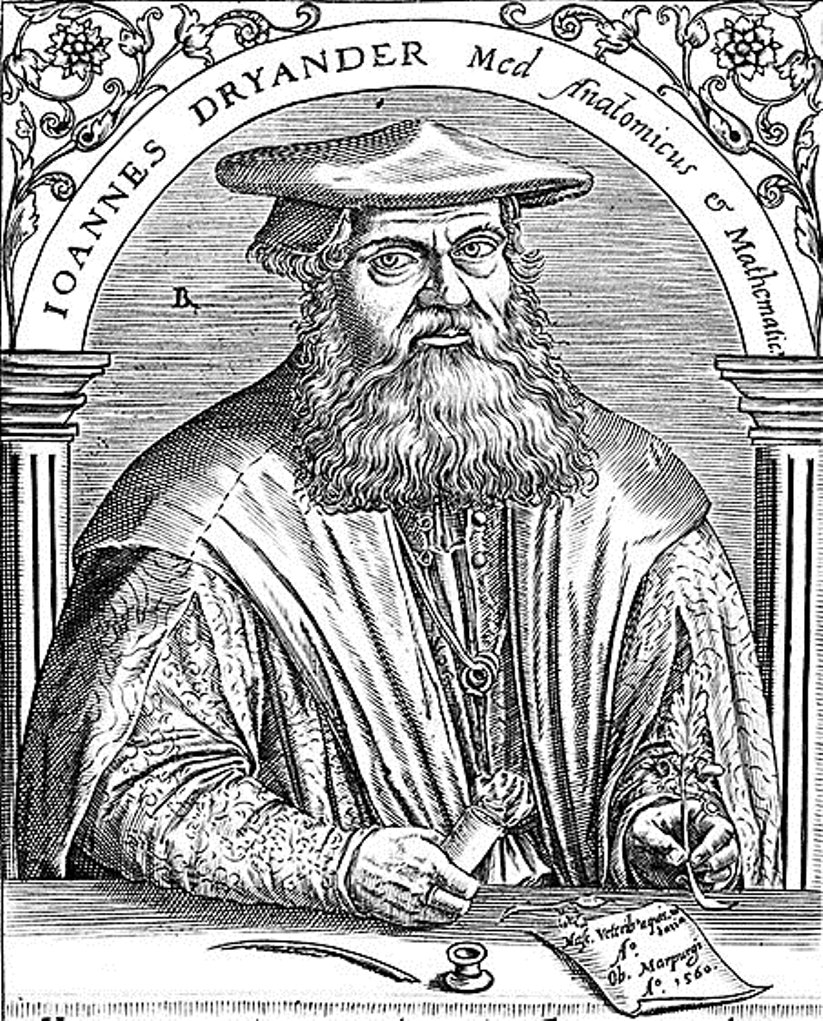
Johann Dryander, born Johann Eichmann, was a German medical anatomist, mathematician and astrologer.
He studied anatomy and medicine at the University of Paris and the University of Erfurt, and in 1535 became professor of medicine at the University of Marburg. A year later, Dryander performed two public autopsies, making the first illustrated description of the dissection of the human brain. Dryander titled his book Anatomiae, hoc est, corporis humani dissectionis pars prior ("Anatomy, that is, the dissection of the human body, part one," suggesting a sequel, which, however, did not follow.
His work made a significant contribution to the development of modern anatomy. Toward the end of his life, Dryander also dabbled in astrology and mathematics.
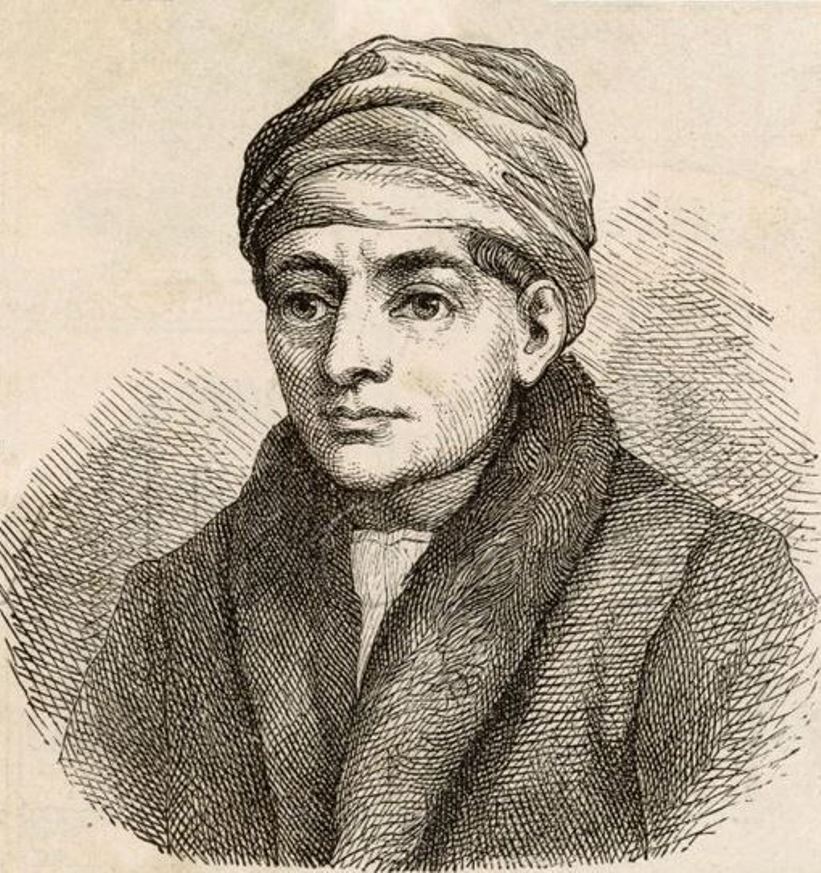
Regiomontanus, real name Johannes Müller, was a 15th-century German astronomer and mathematician, one of the first printers.
The son of a miller, he entered the University of Leipzig at the age of 11 and later transferred to the University of Vienna. In 1452, Regiomontanus earned a bachelor's degree and then a master's degree. With his teacher, the mathematical astronomer Georg von Peyerbach (d. 1461), he spent the next years practicing astronomy and astrology, including observations of eclipses and comets, making astronomical instruments, and compiling horoscopes for the court of Holy Roman Emperor Frederick III.
Regiomontanus was also seriously involved in mathematics, publishing his major work on trigonometry, On All Kinds of Triangles (1462-1464). From 1467 to 1471, Regiomontanus lived in Hungary as astrologer to Hungarian King Matyas I and Archbishop Janos Vitez. Then in Nuremberg, Germany, he opened an instrument workshop, established a printing house, and continued his planetary observations. The scholar planned to print extensive publications on classical, medieval, and modern mathematical sciences, but not all plans came to fruition.
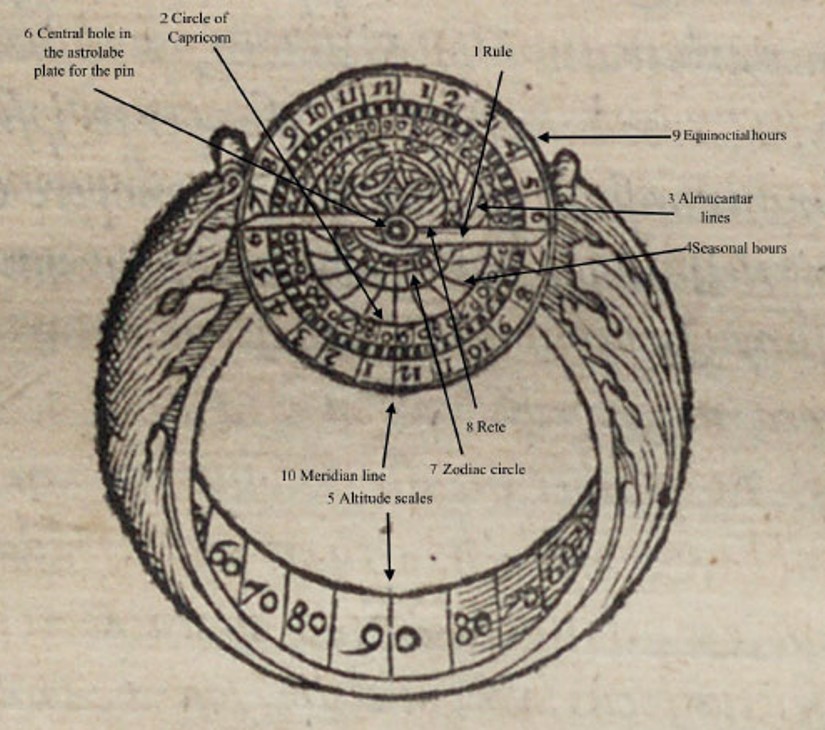
Bonetus de Latis or Jacob ben Emanuel Provenzale was a French physician and astrologer of Jewish origin.
Originally from Provence, France, he was a rabbi, and in Rome became physician to Pope Alexander VI and later Pope Leo X. Latis is known mainly as the inventor of the ring-shaped sundial, an astronomical circular dial that could be used to measure solar and stellar altitudes and determine the time with great accuracy both day and night. These clocks were portable and easy to use for navigation. Latis also wrote a treatise known among scholars about the astrolabe ring (1492-1493).
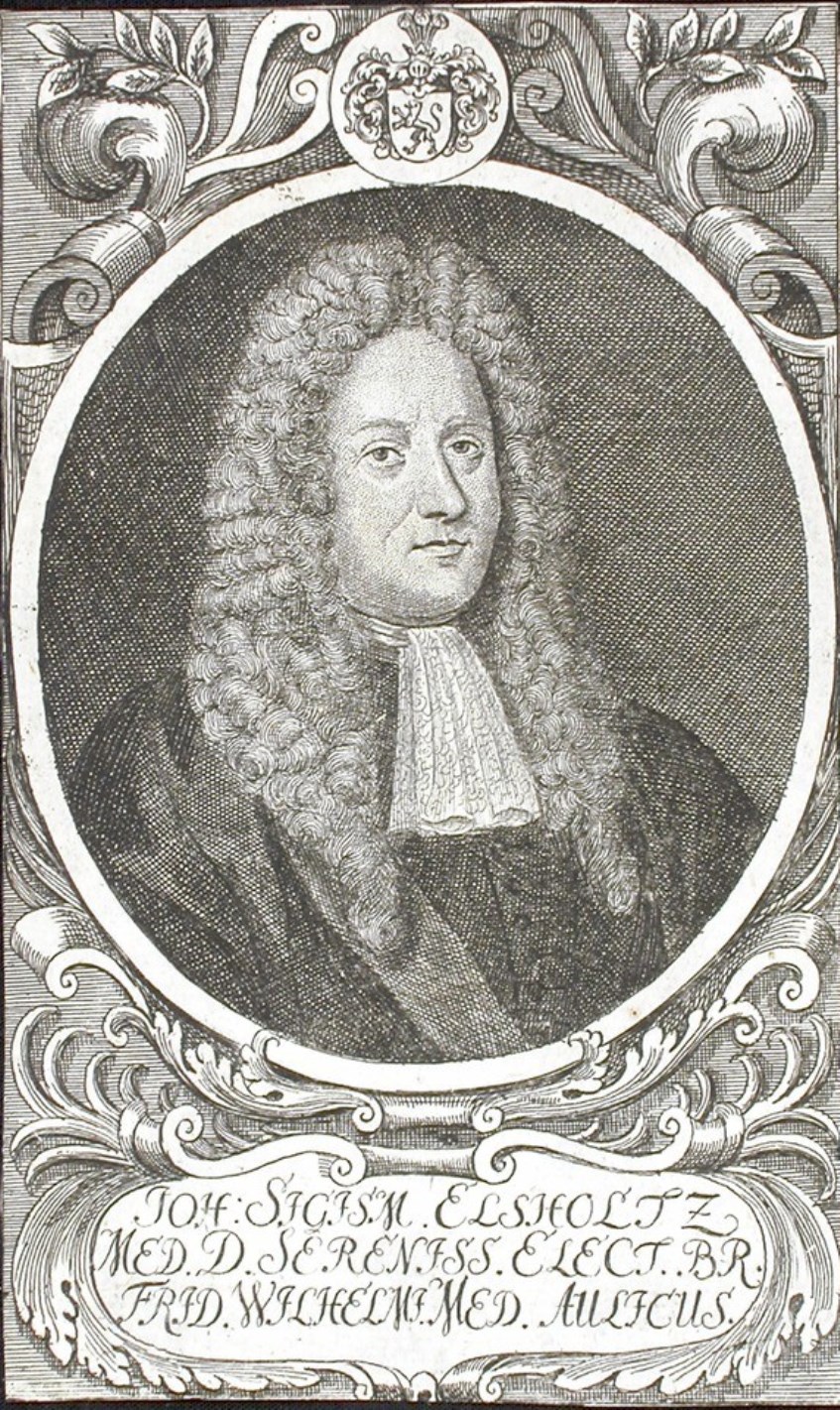
Johann Sigismund Elsholtz (also Elßholtz, Elßholz, Elsholz, Latin Elsholtius) was a German physician, botanist and chemist, a pioneer of hygiene.
Elsholtz studied at the universities of Wittenberg, Königsberg, and Padua, where he received his doctorate. In 1654, he published Anthropometry, written for artists and astrologers as well as students of medicine and physiognomy. The book also explored the supposed relationship between the proportions of the human body and morbidity. Elsholtz was a very versatile scientist and worked in the fields of horticulture, botany, alchemy, astrology, dietetics and medicine, among others.
Elsholtz was later appointed court botanist, alchemist and physician to Elector Friedrich Wilhelm of Brandenburg (1620-1688), and in 1657 was placed in charge of his botanical gardens in Berlin, Potsdam and Oranienburg. In 1672 his treatise Vom Garten-Baw: Oder Unterricht von der Gärtnerey auff das Clima der Chur-Marck Brandenburg was published in Berlin. ("From the Garden Bow or Lessons in Gardening in the Climate of Chur-Marck Brandenburg." It presents the latest gardening techniques for the German climate, discussing flower gardens and their design, vegetable gardens, medicinal gardens, and vineyard care and design.
Elsholtz was a German pioneer in the field of cleanliness and nutrition. Generally speaking, the term "hygiene" first appeared in German in 1682 in his Dietetikon. It is the term he uses to describe the principle of maintaining good health. In his book, the doctor makes recommendations for healthy eating and drinking. He calls for clean water and good air and emphasizes the importance of personal hygiene. Elsholtz was one of the first to administer intravenous injections to people around 1665.
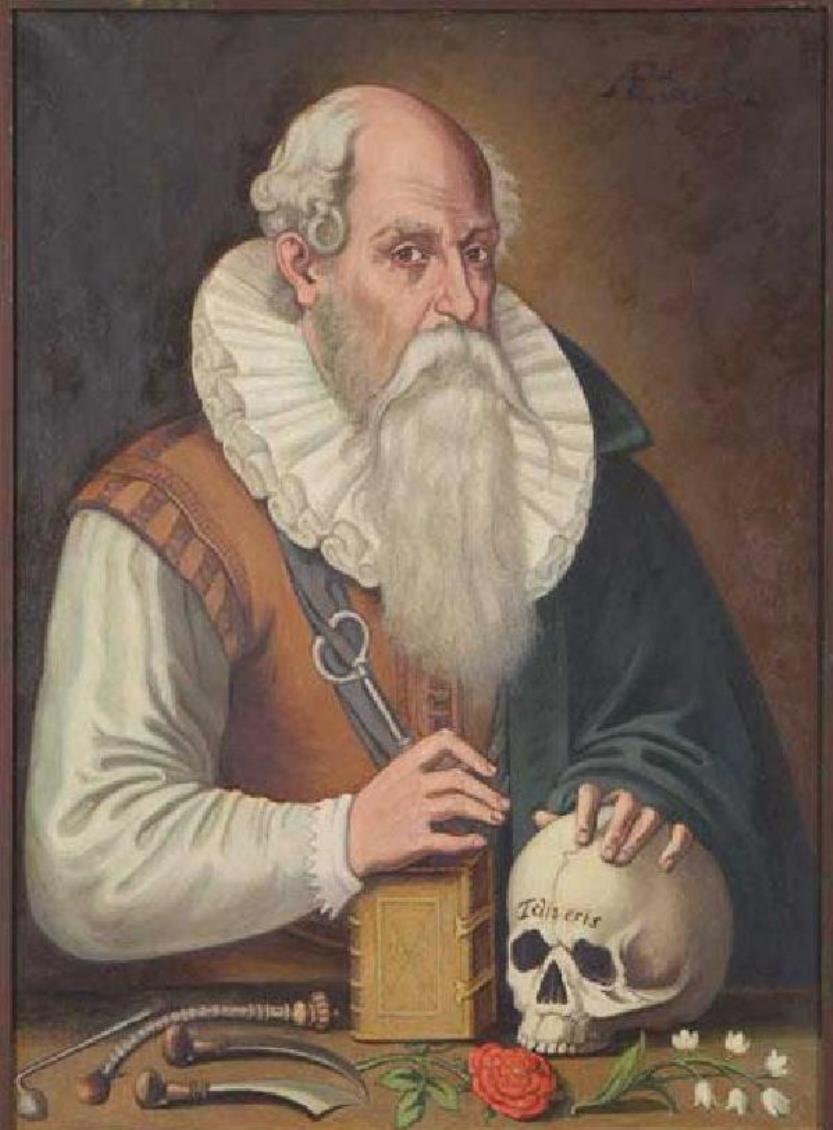
Wilhelm Fabry von Hilden or Fabricius von Hilden (Latin: Fabricius Hildanus) was a German and Swiss Renaissance physician and surgeon, the founder of scientific surgery.
In 1576 he began a four-year apprenticeship as a surgeon with a barber in Neuss. Surgery at that time was considered the craft of bath and barbers; surgeons or wound doctors treated wounds, broken bones, inflammations, and many other ailments. After completing his apprenticeship, Fabry worked for five years as an assistant wound surgeon to Cosmas Slot (died 1585) at the court of Duke Wilhelm V in Düsseldorf. To expand his anatomical knowledge, Fabry constantly dissected and prepared cadavers. In later years, he also encouraged his students to do so and conducted public autopsies to draw attention to the importance of anatomical knowledge. He also made it a habit to do practice procedures on a cadaver before surgery.
In 1615 Fabry was appointed city physician of Bern. Here he wrote several books on gunshot wounds. In 1623 the versatile physician published a small book, "Christian and Good-Hearted Caution against Drunkenness," which he republished in more detail the following year under the title Christlicher Schlafftrunck. Fabry's most important surgical treatise was Observationem et curationem chirurgicam centuriae sex ("Six hundred surgical observations and cures"), first published in 1606. This compilation remained the most important book of German surgery until Lorenz Heister. It describes new surgical methods and surgical instruments for the treatment of amputations, nasal polyps, bladder stones, dropsy, hernias, ascites, etc., etc., etc.
For centuries, Fabricius remained one of the most respected surgeons not only in Germany and Switzerland, but throughout Europe. Among his many accomplishments in the field of surgery may be enumerated his innovation in the amputation of the thigh, for which he invented a special tourniquet; the excision of involved axillary glands in breast cancer; the first classification of burns into three degrees with the appropriate treatment for each variety; and the first description of a medical field chest for military purposes.
Although in his later years Fabritius had already given up practicing medicine, he continued to write medical papers and maintain an active scientific correspondence until his death. He authored some 20 medical books. It was his surgical works, translated into German, French, Latin, English and Dutch, that ensured his recognition centuries later.
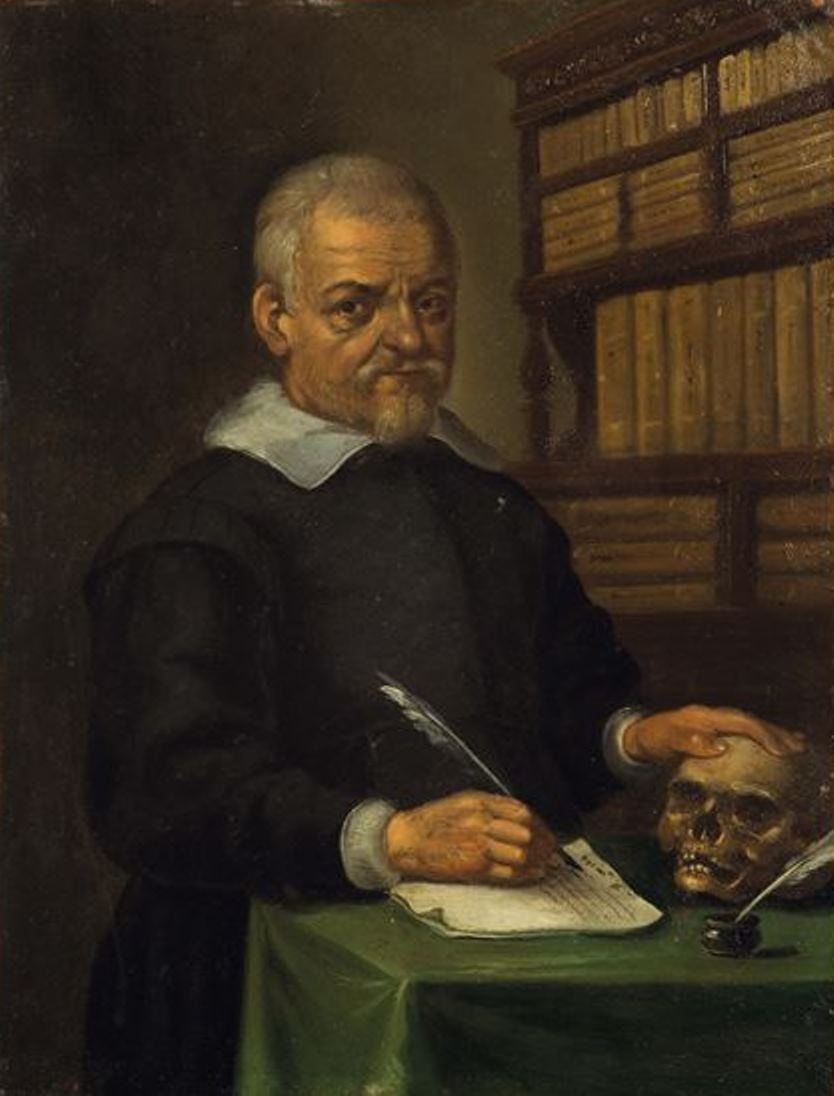
Marco Aurelio Severino was an Italian surgeon, anatomist and zoologist, one of the founders of comparative anatomy.
From childhood Severino studied Latin, Greek, rhetoric, poetry and law in various schools in Calabria, then continued his studies in Naples, soon moving from law to medicine. In Naples he met Tommaso Campanella, who had a great influence on the formation of his worldview. After receiving a medical degree in Salerno in 1606, he studied surgery in Naples with Giulio Jasolino. In 1615 Severino was appointed the first surgeon at Ospedale degli Incurabili. Severino made significant contributions to the transformation of naturophilosophy, medical and surgical practice, to which much of his printed work is devoted.
Severino's main contribution, however, lies in his anatomical works, especially the Zootomia Democritea. This work may be called the earliest comprehensive treatise on comparative anatomy. Severino is considered one of the pioneers of comparative anatomy.
Severino's cultural interests extended far beyond medicine. He corresponded with many prominent physicians and scientists of his time, including William Harvey and John Houghton in England, Thomas Bartolin and Ole Worm in Denmark, J.G. Volkamer and Johannes Wesling in Germany, and Campanella, Jasolino, and Tommaso Cornelio in Italy. Severino was tried by the Inquisition for allegedly unorthodox religious and philosophical views, but was eventually acquitted. He died of the plague in Naples.
